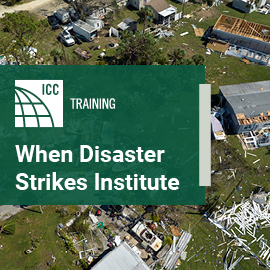
Enforcing building codes can prevent and reduce problem vacancies
![]() With rental property vacancies expected to rise, the time to plan is now, according to Karen Black, chief executive officer of May 8 Consulting, a Philadelphia-based social impact consulting firm.
With rental property vacancies expected to rise, the time to plan is now, according to Karen Black, chief executive officer of May 8 Consulting, a Philadelphia-based social impact consulting firm.
Black presented the webinar “Code Enforcement — A Tool for Preventing Vacancy and Abandonment” as part of the National Association of REALTORS’ Stabilizing and Revitalizing Neighborhoods in the COVID-19 Era webinar series.
Communities that enforce building codes help promote safer, healthier spaces to live and work; support community stability and confidence; and ultimately encourage compliance among owners of vacant and substandard rental properties, Black said. The COVID-19 pandemic, she said, renders vacancy management especially important as an estimated 30 million renters stand to be evicted as a result of the coronavirus-related economic crisis.
Reactivating vacant rental properties benefits a community in myriad ways, including reducing crime, improving the health of residents, raising property values, and increasing tax revenue for the local government and school districts.
The inverse is also true. Allowing vacancies to persist can cost a community a great deal of money. Black estimated that vacant properties in Philadelphia currently cost the city $20 million in annual maintenance and $70 million in delinquent property taxes.
Effective code enforcement, Black argued, can combat these numbers.
Good enforcement includes clear standards. One good source of standards is the International Code Council’s International Property Maintenance Code, Black said. She recommended that municipalities modify the code to suit their own communities’ needs and develop ordinances that suit their residents and circumstances. And above all, standards — and notices of code violations — should be easy to understand. “An owner who receives a letter citing a code provision number won’t know what that means,” Black said. “You need to tell him he has to fix the porch and the stairs.”
Black emphasized that it’s important for municipalities to have a regular inspection schedule of rental properties to prevent problem properties from becoming vacancies. Unfortunately, she said, many cities and towns aren’t proactive but have a system that activates only when a neighbor complains. “Complaint-driven inspections don’t work,” Black said. “If you can get into a property every few years, that can bring up property values and the quality of the neighborhood.”
Another effective strategy for combating vacancies, Black said, is a vacant property registration program. Such a program should include a listing of vacant rental properties and their owners, foreclosure registration, and licensing resources for rental properties and property managers. Once again, Black said, the registration program should be easy to understand: “Clear expectations and communication is key.”
One of the best ways to bring an inattentive owner into the fold, Black said, is when they ask for something from the government, such as a home improvement permit or a presale inspection for a property in another neighborhood. “If they want their permit,” Black said, “they need to bring their vacant property into compliance.”
Jamie McMillen, vice president of government affairs at the Akron Cleveland Association of REALTORS, also spoke about the place-based training her association participated in alongside area officials.
A replay of the webinar will be available on the REALTOR Party website, along with all the other webinars in the Stabilizing and Revitalizing Neighborhoods in the COVID-19 Era series.
This article originally appeared in the August 26, 2020 issue of REALTOR Magazine Online and is reprinted with permission of the National Association of REALTORS. Copyright 2020. All rights reserved. Content reproduced from REALTOR Magazine Online must be reproduced in its entirety and may not be edited.







